New Zealand '14
5 years I haven’t lived in the Netherlands and this happens for the first time to me. I’m going through the gates at Lombok International Airport for my 55 minute domestic flight to Surabaya and I am the only western looking passenger. On a different note I am also flying back in time. Due to the one hour time difference with Java I will arrive 5 minutes earlier on my destination than I initially took off. I am in my element. Bali was amazing. The Gili islands were gorgeous and the weather had been nothing but sunny. It was a good
robmerwe
15 chapters
Battle of Surabaya
February 13, 2015
|
Surabaya
5 years I haven’t lived in the Netherlands and this happens for the first time to me. I’m going through the gates at Lombok International Airport for my 55 minute domestic flight to Surabaya and I am the only western looking passenger. On a different note I am also flying back in time. Due to the one hour time difference with Java I will arrive 5 minutes earlier on my destination than I initially took off. I am in my element. Bali was amazing. The Gili islands were gorgeous and the weather had been nothing but sunny. It was a good
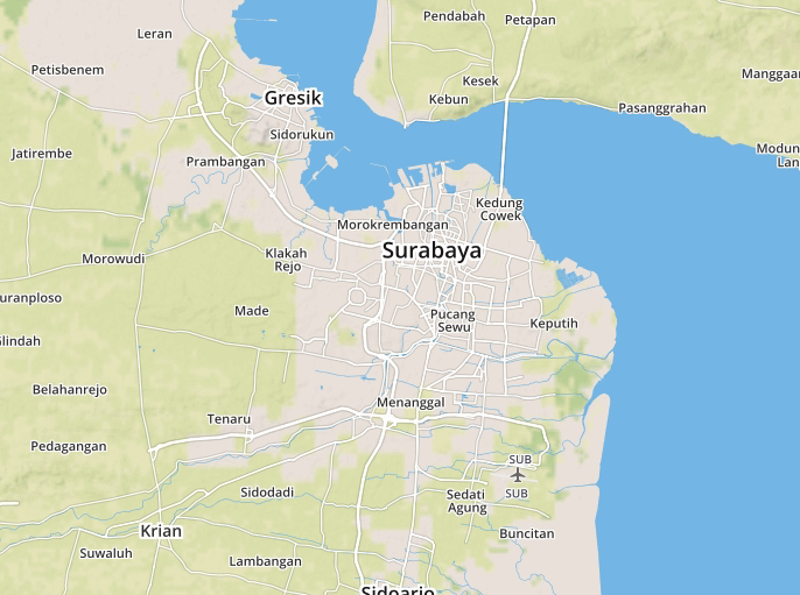
trip, but I am up for an adventure again and want to be more surrounded by locals than by the same faces I can see back home. As I write this down the purser on board introduces the crew through the microphone. Co-pilot’s name turns out to be Michel Wormer, however, I am still the only western looking passenger on the flight. That counts too! The purser also announces what was only mentioned in writing last week on my ticket: “Drug traffickers will punished by the maximum penalty .. (pause).. of death.” That will do, you would say!
Down at the baggage belt I am asked to show my flight ticket that I have just chucked in the bin. At first I didn’t see the reason of it as I just got off the plane. Instead of the ticket I am able to show him my passport which he then compares to the tag attached to my bag. In the past I often wondered why you seldomly hear of luggage that is stolen from the belt by other passengers. This friendly gentleman was here to make sure nobody did so, a very comforting thought. In the arrival hall there is joy among the taxi drivers as soon as they see the tall backpacker coming through the
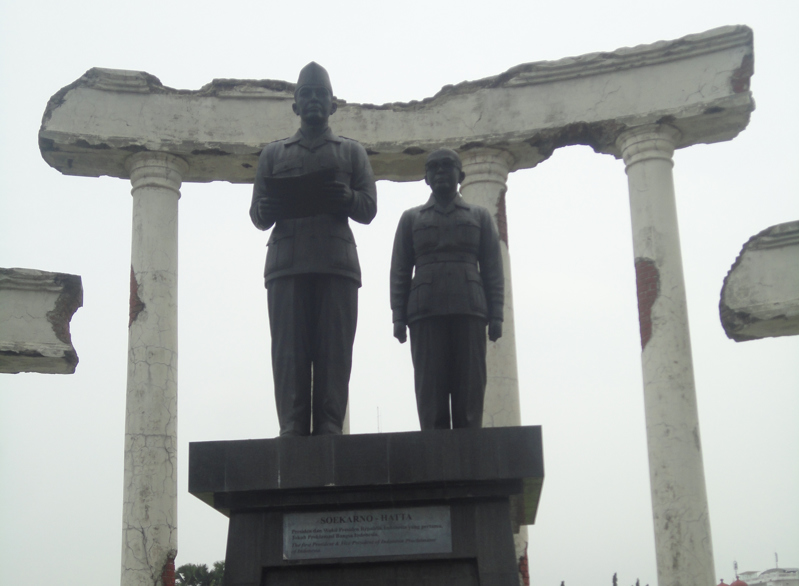
doors. “Yes sir, taxi taxi, yes where you want to go, Bromo, yes, Bromo, yes, yes, you want to go to Malang?” I guess that was the other side to being the only backpacker on the plane. I do what I always do in a situation like this. While getting rid of a very determined taxi pimp I walk into the nearest shop, buy one small bottle of water and stand in the longer queue to have a good overview of the chaos outside. Then I ask the lady behind the till where the closest ATM’s are and where the beginning of the line is for the legal taxis. Knowing this I zigzag my way among the crowd away from the chaos.
Outside the weather changes in a matter of seconds from dry to an insane shower. The kind of shower
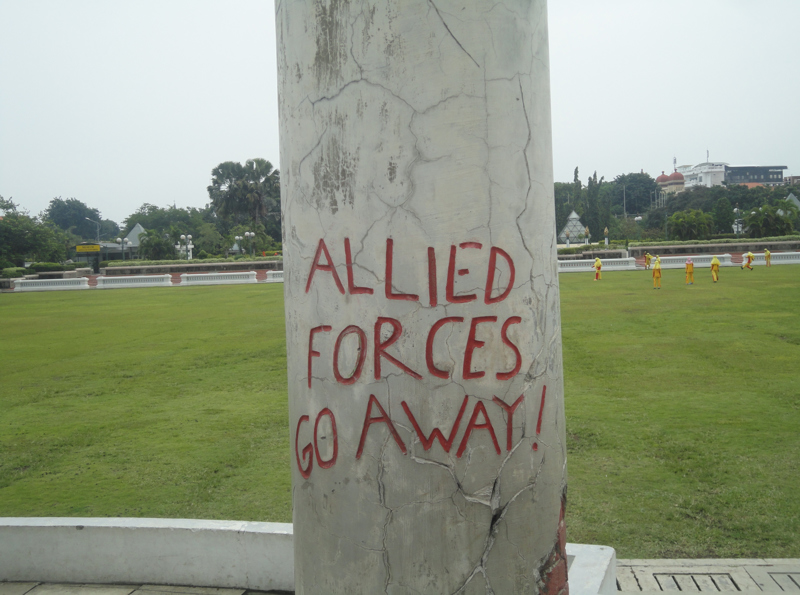
you see them recreate with a rain machine in movie studios. Slowing down for the incidental tree that has fallen on the highway we inch towards the second biggest city of Indonesia and I wonder why I did not check out the weather forecast prior to booking my flight. In certain moments it becomes even difficult to see the other side of the road. Fled into my hostel I start to doubt my planning even more as there only three other guests. The Chinese-Indonesian owner Guan and Rosie, one of the other quests, tell me the weather had been great all day and that due to the rainy season there will be a shower at the end of every afternoon. Travelling in this time of the year in Indonesia you should expect it. I guess I just got incredibly spoiled by the one and a half week without much of it.
I anticipated Surabaya to be a very interesting and possibly confronting destination given the colonial history and the “Battle of Surabaya”. The 10th of November is nowadays the national day carrying the name “Day of the Heroes” and commemorates those who fought in the revolutionary war against the Dutch colonisers, the Japanese and
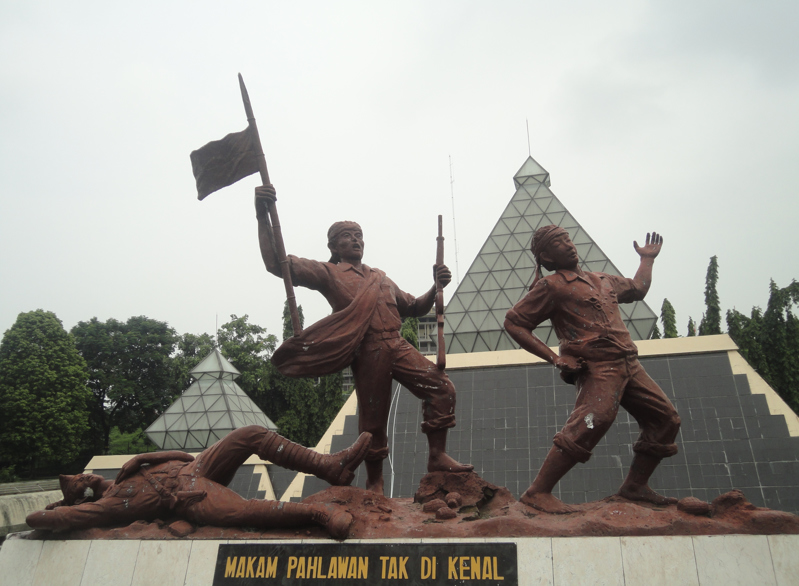
the English allied forces. The next morning Rosie does not have any plans yet and we decide to explore Surabaya together. It started off well by not being able to find our bus and taking a cab to the National Heroes Memorial. The roads are packed and both Rosie and I are feeling in place away from Bali in the big dirty unexplored city of 6 million inhabitants. At least for us it was unexplored. At the entrance of the memorial terrain there is a statue of Soekarno and Hatte. Goose bumps run over my arms. In the Netherlands I have personally never heard too many good stories about the first president of Indonesia as at that point in time he was considered the “enemy” of the Dutch East Indies. Here he is logically honoured and largely commemorated and his statue is being
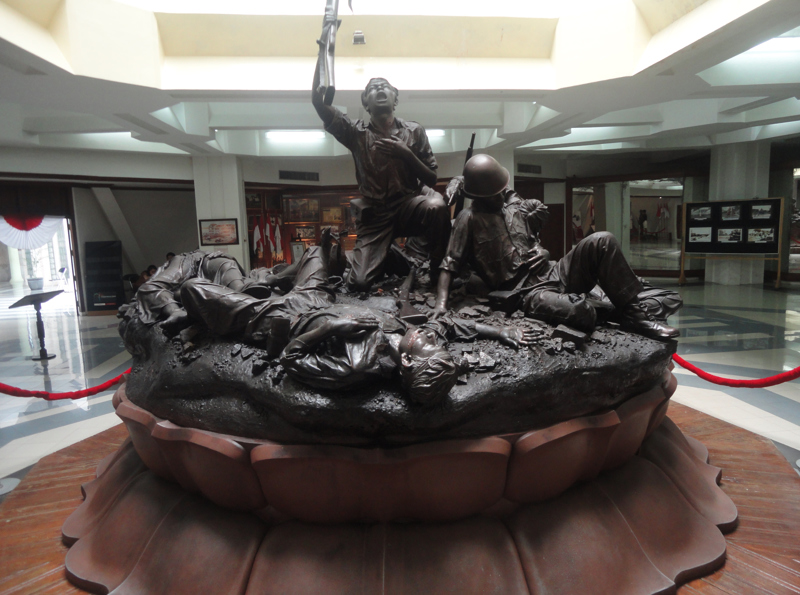
photographed with two local tourists posing in front of it. After we have taken part in some photo shoots with local school kids we make our way to the museum that seems incredibly small. Around the corner there are escalators though that take us underneath the grounds. Let’s try and give you a rather complete picture from the Battle of Surabaya from the Indonesian side of the story. Later on or maybe back home I will try and dig deeper in how the Dutch historian described the events to which they refer as the Police Action (Politionele Acties), but are better described as a war. In August 1945 Soekarno and Hatta declared the independence of Indonesia in the newly named capital, Jakarta. The approximate half year after that there was a power vacuum of chaos created a tumultuous time. A commander of the defeated Japanese supported the new republican and granted access to the armouries so they could take up arms against the Dutch. The British came to aid to the Dutch forces to recolonize Indonesia, although the numbers were not nearly big enough to have any serious impact now that the Indonesian got armed. The British spread pamphlets in October of that year via aeroplanes in which the Indonesian were asked to lay down their weapons and surrender which caused a massive uproar among the Indonesians. They were not in forany foreign rulers after the first Dutch period and then the Japanese rule. Late in that same month Brigadier Malaby of the British Royal Forces was killed by a hand grenade that was thrown in his car. According to British sources he was on his way back from a newly agreed ceasefire. The truth may lay in the middle as nothing of the ceasefire is mentioned in the museum and the “heroic” act is one of the many red lines that runs through the museum. This lead to the confrontation in Surabaya when the Dutch and British forces came with heavy armoury, but were outnumbered by the at least 140.000 strong Indonesian forces and militias armed with the stolen Japanese weapons and hand-made bamboo spears. The British won that battle and as they did not want to get drawn into another war basically turned, for the good probably, although there are also still quite a few British colonies left around the world, their back on the Dutch. This closed a dark page in Dutch history about

which I never heard a lot back in school. Maybe I had one semester in primary or secondary school, but hypocritically enough no country really likes to educate its people about the dark pages of the country’s own deeds, nore does one like to talk about their defeats. Same could be said about the death of Mallaby, if the British version of the story was true of course.
What struck me in the museum was the confronting statues of victorious Indonesian warriors standing on top of the dead allied and Dutch soldiers. It might be untrue, but I can’t really picture or imagine statues in Europe where allied forces were standing on top of German or Japanese bodies… Interesting fact to find out is that the Indonesian flag was created when militias climbed a building with the Dutch flag hanging of the flag post. They ripped off the blue part and made the red and white their own… Although it isn’t a happy story I was really glad to have seen this museum. The museum was up for a renovation, but very informative. History is written by the victorious, those who loss tend to not want to talk about it too much. Probably the older Dutch generation have heard the stories, but they are not well known to my generation…
Outside the walls of the museum the history is forgotten or forgiven. The Dutch and British are asked a thousand times to take a selfie with the locals and the welcoming Surabayans all want to know where they are from. Blanda (Dutch) and Ingris (English), “oh very good Mister, van Persie, Arjen Robben, Gullit, van Basten!" The only person that might have reminded the Dutchman of the past was an elderly 70+ rickshaw driver. “Oh Blanda, taxi meneer?”
1.
Border Town
2.
(Re)start Christchurch
3.
Catching a ride to Queenstown
4.
Milford's Gray Beauty
5.
Kiwi Easter
6.
New Devon
7.
Wellington's own
8.
Where you going cuzzy!
9.
Republic of Whangamomona
10.
Wet Asian Cup experience in New South Wales
11.
Echo Beach 8 years later
12.
Battle of Surabaya
13.
Your country has the big dick
14.
Central Java’s Karaoke
15.
Cool breeze and clean feet
Share your travel adventures like this!
Create your own travel blog in one step
Share with friends and family to follow your journey
Easy set up, no technical knowledge needed and unlimited storage!